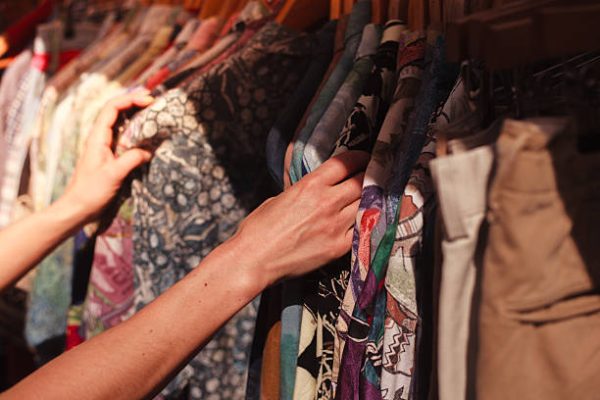Sustainability at School
A brief guide on things to do at school to be more environmentally conscious.
Making changes in our routine can be difficult, with people often overlooking small changes in the name of being more sustainable as they may seem irrelevant. Although there are bigger contributors to climate change we need to tackle, if everyone started by making some small changes, there would be a substantial difference in tackling the climate crisis society is experiencing. Here are a few ways students can be more environmentally conscious at school.
Carpooling
According to the United States Environmental Protection Agency, vehicles create a large amount of CO2 emissions, releasing almost 1.6 billion tons of emissions into the atmosphere a year. Carpooling with one or more friends to and from school would be a great way to cut down on CO2 emissions.
Plus, you can all split gas money so you leave with less pollution and some extra cash in your pocket.
Other great alternatives would be to walk or bike to school if the weather permits, and even being driven to school in a school bus cuts down emissions greatly.
Recycle!
We’ve been taught this repeatedly since elementary school and it really makes a huge difference. Every classroom in the building has different bins for recyclables and non recyclables, and it only takes a few seconds to figure out which bin your trash goes in.
Recycling reduces waste in landfills and conserves natural resources and energy by eliminating the need to make new materials. Metal cans, glass, plastic containers, paper, and cardboard can all be put in the recycling bin, everything else should be put in the trash bin. Putting trash that can’t be recycled in the recycling bin poses large problems, so make sure you don’t throw any styrofoam, food containers with stains, or batteries in the recycling bins!
School Supplies
If you’re anything like me, school shopping is a highlight of your summer, but buying brand new supplies every year can be wasteful. One thing that you can do instead of buying brand new items is reusing things you still have from the year before.
If you use mechanical pencils, avoid buying new ones and just get new lead (or better yet ditch the plastic and get biodegradable pencils.) Reuse pens that aren’t empty and notebooks that were barely written in.
Before throwing any supplies away, check for gently used ones and donate them to schools in need.
Most school supplies can also be recycled!
Things like notebooks, folders, and books can be recycled. Binders can be recycled in some areas, so check your local city regulations to make sure what is allowed. Mechanical pencils are not recyclable however.
Another great way to cut down on paper and excessive school supplies is to take notes digitally. This is especially easy this year since most assignments and school work are done on a computer.
If you do need new school supplies and want to look for yet another sustainable way to do so, there are various companies selling biodegradable pencils, notebooks, binders and more. Although these products tend to be more expensive than something you could pick up at target, they are more durable and will last longer than most plastic versions.
Some companies selling these earth-friendly products include Sprout World, Amber&Rose, and Micheal Roger Inc, all of which can be found on amazon. Make sure to use up or donate whatever supplies you already have before throwing it out and opting for a biodegradable version, as throwing out a product that has never been used is extremely wasteful. Get use out of what you have now and then make the switch!
Use less electricity
With the district ensuring everyone is using some sort of device for schoolwork this year, it is important to make sure you’re not wasting energy.
Although taking notes and doing work on a computer is a much more sustainable alternative to doing work in heavy packets that get thrown out after a month, we need to be careful not to overcharge and use energy when it isn’t needed.
Only charge your computer when it’s really needed, and unplug it as soon as it’s full (this also saves its battery life!)
Turning down your brightness is also a good way to cut down on your energy consumption, as less battery is used up for lower screen brightness. This is also better for your eyesight, it’s a win for everyone.
Use reusable containers and water bottles
This is a big one for someone who packs their own lunch for school. Make sure to use reusable containers and utensils instead of plastic forks and bags or aluminum foil to wrap.
There are a lot of reusable plastic, ceramic, and steel containers you can buy for your food, you can bring regular utensils you use at home. There are also lots of reusable beeswax wraps out there to cover your food or wrap a sandwich in.
Going vegetarian one day a week
CO2 and methane emissions would greatly decrease if everyone didn’t eat meat for just one day a week.
Even just cutting down on your beef consumption would make a big impact. According to the Food and Agriculture Organization of the United Nations, the meat industry creates 7.1 gigatonnes of greenhouse gases every year, and the beef industry alone accounts for almost 14% of total man-made emissions.
The big problem with the beef industry is that it mostly emits methane gas, which the United States Environmental Protection Agency states has an impact 25 times greater than CO2 when it comes to trapping heat, rapidly increasing atmospheric temperature. Methane is a short-lived and powerful gas, so cutting down on those emissions would make a rapid change in global warming.
For those that make lunch at home, foods like mushrooms, chickpeas, and plant-based meat, like Impossible Meat, are great alternatives that maintain similar nutritional value to meat whilst tasting good.



